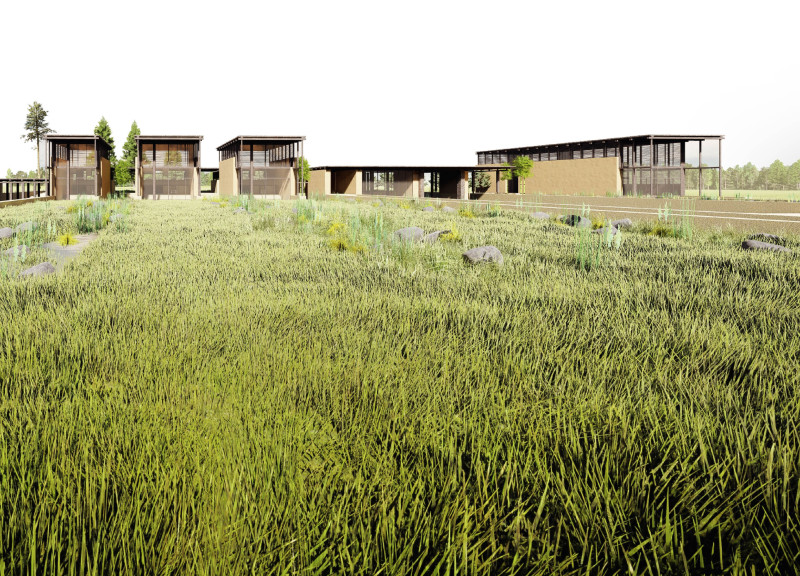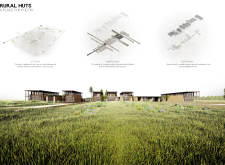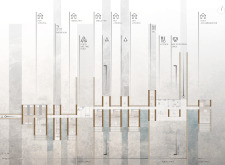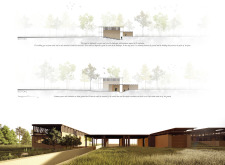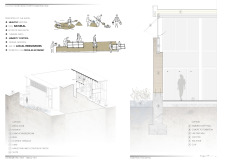5 key facts about this project
Rural Huts: A Place for Poetry offers a thoughtful approach to living and working within nature. The design serves as a retreat for poets. Positioned in a remote landscape, it aims to connect individuals with the natural world. The concept revolves around a unique underground circulation system that ensures minimal disruption to the surroundings while creating spaces for solitude and collaboration.
Design Integration
The layout is carefully planned to make use of the site’s natural elements such as wind, sun, and water. The underground circulation is dug into the earth, allowing the walls to be built from the material that has been excavated. This innovative method not only preserves the visual landscape but also enhances thermal comfort and acoustic qualities within the space. It reflects a commitment to blending architecture with its environment.
Spatial Arrangement
Rising above the earth, a wooden structure houses the workspaces for poets. This separation of levels creates a contrast between the built form and the natural ground. The earthen walls blend into the landscape, while the wooden framework gives a different texture and a sense of openness. The walls are arranged strategically to frame views of the nature outside, encouraging connection with the surroundings.
Material Consideration
Sustainability is a key aspect of the design, reflected in the choice of materials. The use of rammed earth for the walls and a concrete foundation offers durability while promoting local sourcing. Holz100 walls provide additional strength, creating spaces that are both functional and inviting. These materials contribute to a reduced environmental impact, aligning with the overall philosophy of the huts.
Common areas and paths for movement are situated below ground, allowing activities to flow without drawing attention. This thoughtful arrangement creates a sense of privacy and seclusion, letting users fully engage with their writing and reflection.
Volumes rise gently from the soil, maintaining a connection to the earth and landscape. Each hut reflects the careful design process. The interaction between natural elements and thoughtful architecture encourages an inspiring and peaceful environment for its users.


